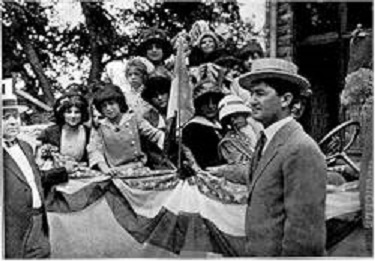Nelly la domatrice
R: Mario Caserini. B: Arrigo Frusta. K: Angelo Scalenghe. Ba: Alfredo Manzi. D: Fernanda Negri-Pouget, Mario Bonnard, Mario Voller Buzzi, Antonietta Calderai, Oreste Grandi, Alfred Schneider e i suoi leoni. P: Società Anonima Ambrosio, Torino (serie d’Oro). It 1912
“In 1899, Caserini (1874-1920) was director of an pantomime company composed of children, but soon left this work to become an actor, and later director of a dramatic company. After this short theatrical period, he began working for the cinema at the Cines in Rome making his debut as a film director with the film II romanzo di un Pierrot (1906). In 1907, he was promoted to art director of film studio and in this role led the production of Cines to the literary and historian genre, directing between 1909 and 1910 some of his most successful films such as Anita Garibaldi, Beatrice Cenci, Dramma medievale, Giovanna d’Arco, L’innamorato, La dama di Monserau, La gerla di papà Martin, Macbeth, Otello, Wanda Soldanieri and others. In 1911, he went to work at the Ambrosio Film of Turin for which directed Mater Dolorosa and Parsifal, but just two years after, he broke the contract with this film studio and went to work at the Gloria Films of which he was a founding partner and art director. In 1913, Caserini directed what is regarded as the most significant film of his career, Ma l’amor mio non muore starring Lyda Borelli, and his masterpiece Gli ultimi giorni di Pompei based on the novel ‘The Last Days of Pompeii’ by Edward Bulwer-Lytton.”
Cristiano Ruggero
Find a Grave

>>> Caserini on this website: Parsifal, Ma l’amor mio non muore, Gli ultimi giorni di Pompei
 Nino Oxilia, died 1917 in WW1
Nino Oxilia, died 1917 in WW1

